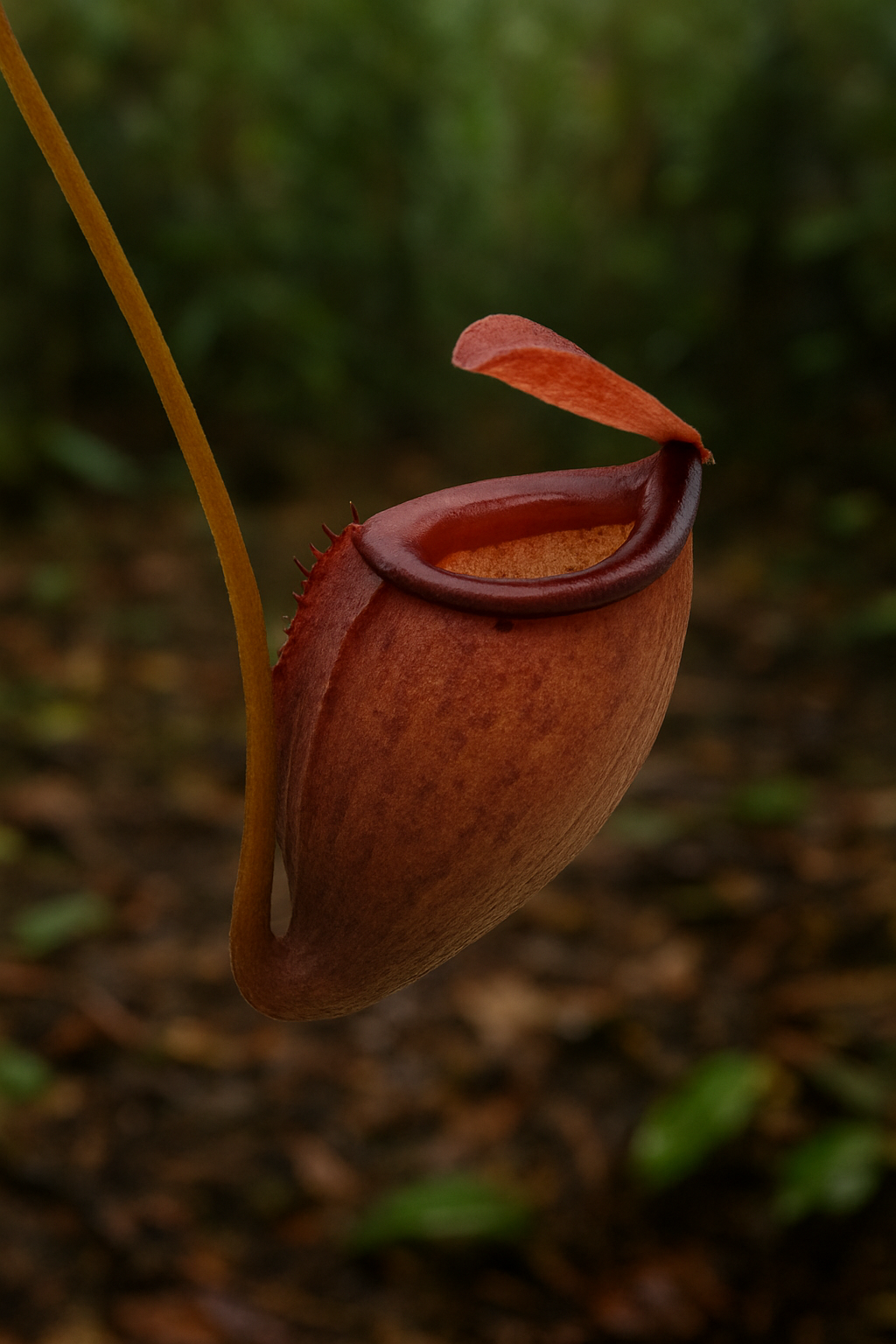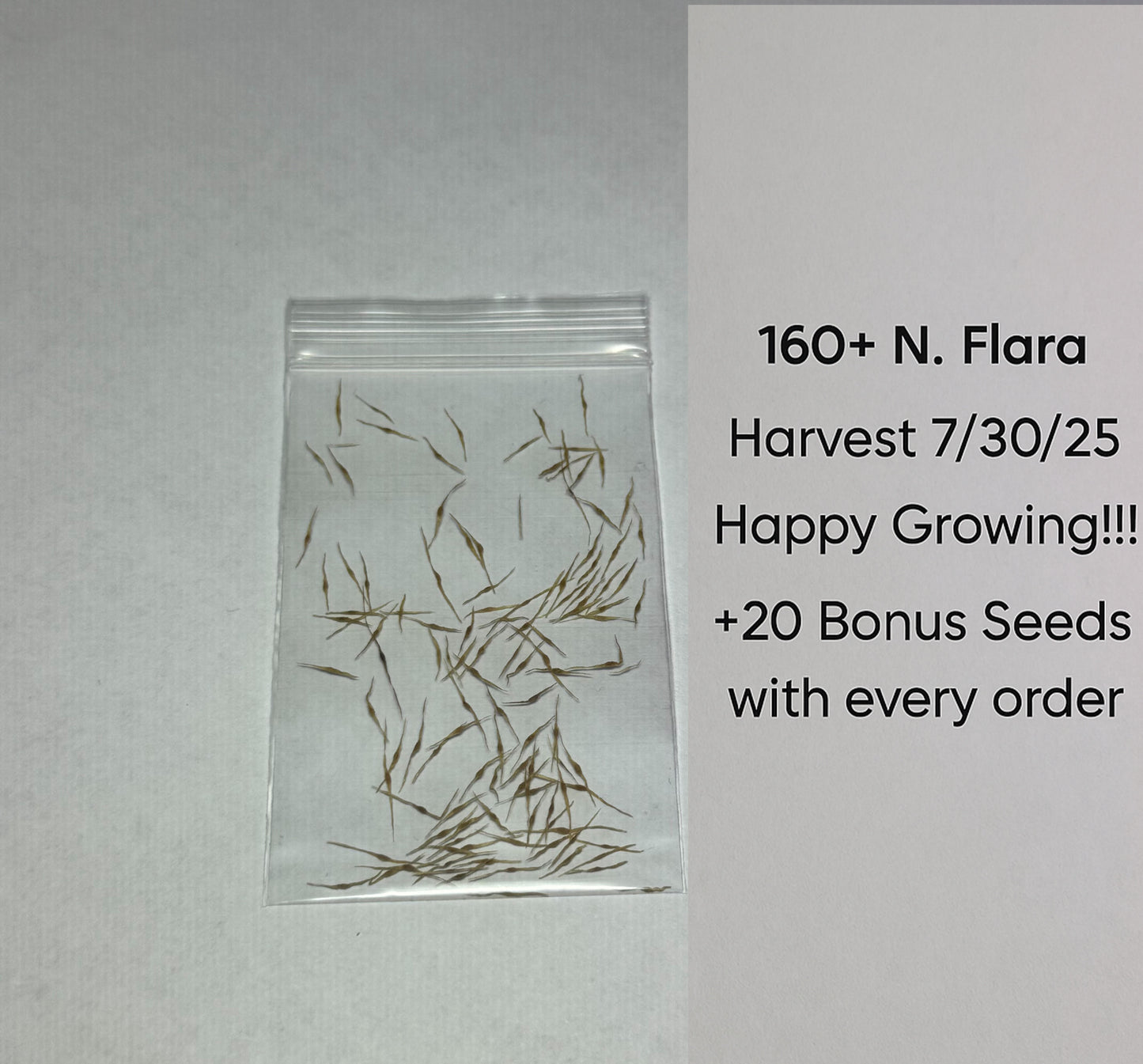The Nepenthes Seed Store
100 Nepenthes Flava Seeds
100 Nepenthes Flava Seeds
Couldn't load pickup availability
Contents - 100 Flava Seeds + 20 Bonus Seeds
Nepenthes flava needs very specific conditions for germination and early growth.
-
Temperature:
-
Daytime: 80-90°F (27-32°C)
-
Nighttime: 65-75°F (18-24°C)
-
-
Humidity: Keep humidity levels between 60-80%. Nepenthes are native to humid tropical climates.
-
Light: Bright, indirect light is ideal. Use grow lights (fluorescent or LED) if you're growing indoors. Avoid direct sunlight, which can scorch the seedlings.
-
Air Circulation: Ensure there's good air movement, but avoid direct drafts that could dry out the seedlings.
3. Use the Right Growing Medium
Nepenthes prefer a low-nutrient, acidic substrate. You can use a mix of the following:
-
Sphagnum moss (the main base)
-
Perlite (to improve aeration)
-
Vermiculite (optional for extra water retention)
-
Optional: A small amount of orchid bark for additional structure.
The medium should be slightly moist, but not soggy. It needs to stay damp but not waterlogged.
4. Seed Sowing
-
Sterilize Your Tools: Sterilize any tools or containers you’ll be using to prevent fungal or bacterial growth.
-
Prepare the Container: Use a shallow, clear container (a seed tray or small greenhouse works well) with drainage holes. Ensure that the container is clean and sterile.
-
Sowing the Seeds: Nepenthes seeds are very small, so be gentle. Spread the seeds evenly over the surface of the growing medium. You don’t need to bury them, as they require light to germinate. Lightly press them into the surface with a flat object (e.g., a piece of plastic or cardboard) to ensure good seed-to-medium contact.
5. Creating a Humid Environment
-
Covering the Container: After sowing, cover the container with a clear lid, plastic wrap, or a humidity dome. This will help maintain the high humidity levels and prevent the seeds from drying out.
-
Misting: Mist the surface lightly with distilled or purified water to ensure moisture levels remain consistent. Avoid over-wetting the medium.
6. Germination
-
Patience: Germination can take anywhere from 3 to 6 weeks, depending on environmental conditions and seed quality. During this time, maintain consistent warmth, humidity, and light.
-
Light Conditions: Keep the light levels high (but indirect) for 12-16 hours a day. A light cycle of 12 hours on, 12 hours off works well.
-
Monitor Growth: After germination, the seeds will grow into tiny seedlings that are initially very slow and delicate. You might see tiny green tufts or leaves starting to form.
7. Care for Seedlings
Once the seedlings appear, they will require the following care:
-
Light: Continue providing bright, indirect light. Avoid direct sunlight, which can burn the tiny seedlings.
-
Watering: Water the seedlings with distilled or rainwater only. Avoid tap water as it may contain salts or chemicals harmful to carnivorous plants.
-
Humidity: Keep the humidity level high (60-80%) to ensure the seedlings don't dry out. If you notice the seedlings wilting, raise the humidity.
-
Feeding: Do not feed the seedlings for the first few months. They are small and don’t yet have the capacity to catch insects. Once the leaves begin to form, you can start feeding them small insects if you wish.
8. Transitioning to Larger Pots
-
As the seedlings grow, they will need more space. You can transplant them into individual pots when they are large enough to handle (usually when they have several leaves or pitchers).
-
Pots: Use small pots with a similar growing medium of sphagnum moss and perlite. Be careful not to disturb the roots too much during transplanting.
9. Long-Term Care
-
Watering: Keep the soil moist but not waterlogged. Nepenthes are very sensitive to root rot.
-
Feeding: When the plants mature, you can start feeding them insects like fruit flies, ants, or small crickets. Be cautious not to overfeed.
-
Repotting: As they grow, they will need to be repotted into larger containers every 1-2 years to prevent the roots from becoming root-bound.
10. Patience and Observation
-
Growth Rate: Nepenthes flava grow slowly, especially in the early stages. It can take several years for them to mature into larger plants capable of producing full-sized pitchers.
-
Environmental Stress: Keep an eye on pests or diseases. If you notice any changes in leaf color or spots, address it promptly.
Share



